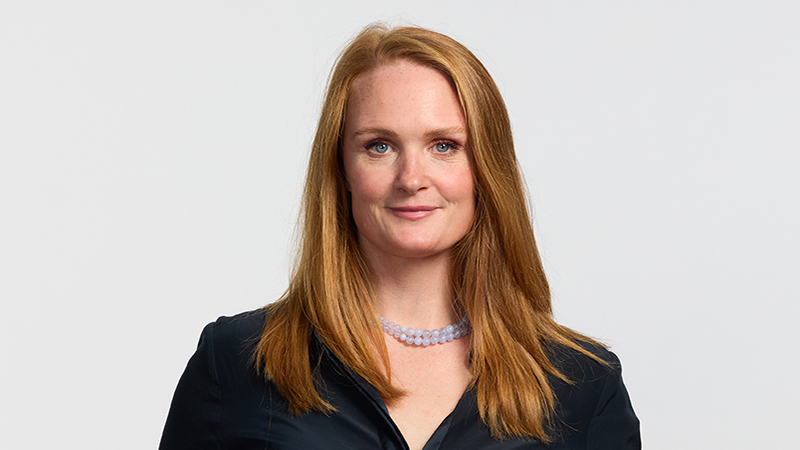With central banks becoming more dovish the benefits of floating rates have become less obvious, but industry participants believe asset-backed securities (ABS) have a role to play in income-seeking portfolios regardless of which way rates go.
According to Twenty Four Asset Management partner and portfolio manager Ben Hayward (pictured), investors often assume rate cuts mean floating rate vehicles such as ABS should be avoided. But he says this is misleading for two reasons. First, because the coupons on ABS bonds are linked to Libor which tends to be higher than the base rate and second, most of the return in ABS comes from the credit spread rather than the floating rate.
NAV protection
A cut in the base rate benefits fixed-rate bond funds because of the capital gain they get as yields fall, but that gain gets crystallised at a lower yield. With floating rate ABS bonds, however, the bond price does not change, but there is more net asset value (NAV) protection.
Hayward explains: “If we see rate cuts, then ABS bonds won’t experience a duration-led capital gain, but bear in mind that when fixed rate bonds have had that capital gain then you are left holding the bond at a lower yield.
“Instead, what floating rate bonds are left with in a lower yield environment is attractive credit spread, and it is this that has been driving the majority of returns within the ABS market, not the floating rate properties, given how low Libor has been for the last 10 years.”
He adds the lack of duration gives a more predictable and less volatile return, which is in contrast to what has been seen in the corporate bond market. The key message, says Hayward, is that downside from owning ABS is less than people think and the upside is greater.
Lack of rate sensitivity
Psigma Investment Management head of investment strategy Rory McPherson says low interest rate sensitivity is one of ABS’s key selling points. The interest rate duration is essentially nothing because of the fact ABS tends to be linked to assets priced off Libor.
McPherson believes neither the Bank of England or the Federal Reserve is going to increase rates in the next year or so. But he adds if the rate cuts result in better growth and inflation being priced in then both could start to pick which could result in market interest rates rising.
“If bond yields get a bit more normal, and not having $15trn with a negative yield, then you’re going to lose money if you’ve got interest rate duration.”
Liontrust global head of fixed income David Roberts says while floating rate does offer some protection against interest rate increases, these are often geared, credit instruments and there could be pressure on prices as rates go higher and the ability to service outstanding debt declines.
“ABS are often ‘structured’ to have some higher rated senior bonds and a lot of lower rated junior ones – obviously the higher rates pay lower yields but also should be ‘safer’ in a market downturn. In terms of duration, though, floating rate note ABS structures will have little.”
Attractive yield in today’s world
McPherson also says at around 6% the yield on ABS is “extremely good in today’s world”. The yield is similar to the high yield index but once hedging costs are taken into account, the take home yield for a UK investor in high yield is probably more like 5%.
He says although “not screamingly cheap” the value opportunity on ABS is much more attractive than high yield, for instance. In addition, there is a premium built into the UK mortgage-backed securities market because the UK is so unloved.
BMO Gam multi-manager team member Kelly Prior says the additional yield and the lack of correlation to equity versus equivalent yielding bonds makes the asset class attractive.
Prior says: “This is an area that lends itself to specialist managers with a good track record of picking the best investments in an increasingly diverse universe. Post the global financial crisis, transparency in the underlying assets has meant greater confidence can be gained in the quality of the underlying asset pools behind the vehicles.”
Default risk?
But does the looming threat of Brexit and the struggling economy increase the likelihood of mortgage defaults? Not according to Hayward who notes from the start of the global financial crisis to now, default rates in the UK have gone from around 0.25% to around 0.5% per annum.
He adds: “Clearly default rates are also important and will be driven by employment and mortgage rates, however the latter is well covered by borrower stress tests during the mortgage application. Our stress tests cover these variables and we are comfortable with any likely downside – to put this into context, for an average BBB UK RMBS bond, we would need to see cumulative defaults over a three-year period rise to around 20% and the worst housing house price crash in my lifetime before we are in danger of coupons on the bond being missed.”
However, Prior points out liquidity issues with these structures.
“Liquidity has yet to be fully tested, which is often the counter argument for those that are less keen on the area,” she says. “The development of STS – simple, transparent and standardised – as a ‘gold standard’ for issuers is an interesting development and should lend weight to ABS becoming a more trusted asset pool going forward.”
McPherson agrees the big risk for investors is liquidity but Psigma alleviates this by having a separate mandate.
“If you do get a crashing out, UK recession-type scenario, you’re going to get freezing up of the credit markets and these things will be difficult to sell. But if you’ve got a long term horizon, you ride it out.”











